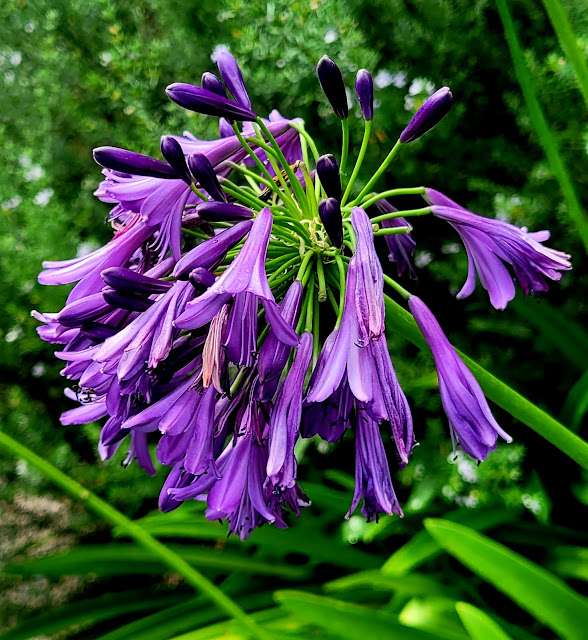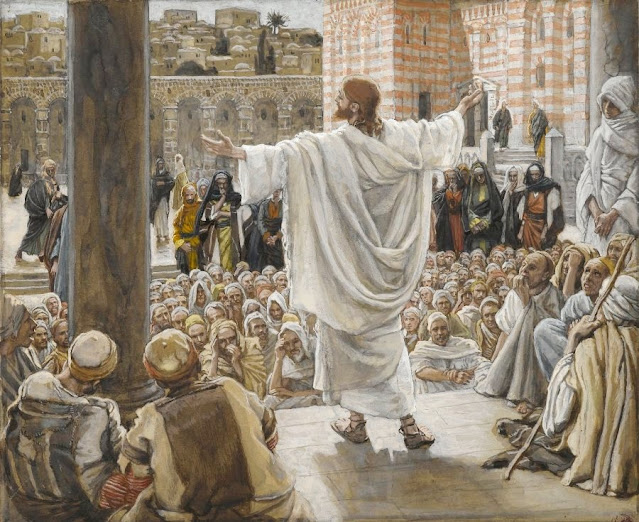Ford Anglia - courtesy the internet.
Ford Anglia - courtesy the internet.
My last day of the commitment to write everyday for my
blog from 21 November 2022 is today. I’ve made it. And I do hope that you have
enjoyed it.
It was raining during the night; at present it is not
raining; the clouds promise more rain. The forecast predicts thunder storms in
the afternoon. Eventually it became the sun was blazing away and all of a
sudden it disappeared behind curtains and you guessed it: it started raining
again. As I am typing away, it is raining.
My treasure chest
Yesterday my friend showed me his museum in the making.
He’s got an impressive array of things that he’s kept since childhood days. His
late mother collected various things; the most impressive to my mind anyhow, is
her collection of Dinky toy cars, and Corgi cars and other makes I don’t even
know existed. As a young boy he assembled lots of plastic toys and kept it. Now,
it can go into his museum. One piece struck me as rather sentimental: a Ford
Anglia. Yes, the one with the back window that slants diagonally from top to
bottom; that was the “guarantee” that not a single raindrop would ever fall on
that back window!! Now I regret not taking any photos in his archives!! It is a
real treasure house waiting to be put in place. A place he and his grandchildren
will enjoy. A place where he can show them magazines from his youth, he kept from
1960’s. A place where he can tell stories and anecdotes from his early youth –
stories that he had forgotten and yet that re-surfaced when working with this
stuff.
There is even a fair number of Nordic books, inter
alia, a Nordic dictionary which is as ancient as Norway is.
During his army training he served in the Pantzer
corps. To crown it, he kept his note books, paging thru slowly and reminiscing.
Detailed sketches in his own hand of military weaponry with detailed descriptions
alongside. And cartoons of his lecturers. An old radio with a makeshift coat hanger
making do as an antenna – and the story behind that radio that came all the way
from the Netherlands when his wife and family when they relocated to South Africa.
The Queen and King of the Netherlands glares gloomily out
of an old colour photograph with a shattered glass cover. Boxes full of model
cars that will make your mouth to water; cars stacked on top of one the other.
It is a colourful array of shapes, metal, plastic and rubber wheels. A mishmash
of old dated toys – the real value lies inside him.
I was looking eagerly to see an old school report of my
friend [without success]. He showed me some of his diaries his parents gave him;
he paged thru and started reading some of his write-ups: “I woke up this morning.
Got dressed. Had breakfast. Went to school. Came back. Had a conversation with
my mom. I had a nice day.” He was about 9 at the time; how precious. Virginia
Wolf would have confronted him about the say so: “I had a nice day.” No, she
would say. Where exactly did you go to? School? Which school? Who was your
teacher? What exactly did you read? Did you understand everything you read? If
not, why not? So, Virginia would drag a weird and wonderful story out of this 9-year-old.
The perennial question remains: how will you preserve
your legacy? What will you preserve/keep alive for your descendants, if anything
at all?
In the mean time we keep going and we keep on making
stuff.
Have you read my Number 26? The stories Leendert
Joubert wrote? He is passionate about a walking stick! Not just any old walking
stick. Not a walking stick that you bought when you were on a very expensive
overseas trip. This walking stick evolved from its former life as a fishing
rod. Not just any old fishing rod. It was Leendert’s father’s rod. He says
about it:
“Another
example is the cane walking stick, that originally was my father's fishing rod.
Anybody can make a walking stick from a piece of cane for less than twenty
rand, but mine is not for sale for any amount of money. And still, I doubt if
any of my children would want it. It just won't fit in with their lifestyles or
living conditions.”
Leendert’s dad had a unique influence on him: he left
him a walking stick that no money can buy. By the way, Leendert who made that
walking stick? When?
The abbot of the Coptic Church in Johannesburg once
gave me a wooden cross and this I keep in a special red leather covered box
with other stuff.
Coelacanth and other carvings.
You can see some of my soapstone carvings: the coelacanth’s
tail, a snail, a crab, a broken shell and a star shell. Miss Courtenay-Latimer
springs to mind and the time I met her in her quaint little house in the
Eastern Cape.
Somewhere along the line I picked up soapstone and I
took a brave step to turn it on my lathe. It caused havoc amongst my chisels
but I sharpened it afterwards for my woodturnings. The last piece I turned was
a Zambian rosewood fruit bowl for my wife, which I finished off with layers and
layers and layers [20? 30?] of special wood sealer/varnish: Danish varnish.
Malawian pumpkin plaster casts
What on earth are the white plaster of Paris stuff?
Let me explain. When we lived in Morningside, my gardener brought me Malawian
pumpkin seeds and we grew it. It is a prolific grower with the most delicious flesh.
The giant weighed just over 15 kg – it was big. On average I harvested 7.5 kg
per fruit. And I never kept its seeds.
Our erstwhile neighbour visited us in Rivonia and
brought a pumpkin that is an offspring that I gave her years back. And then I saved
seeds which are now growing on my pavement. Let’s hope there will be enough for
my neighbours to share.
Let’s go back to Morningside: the leaves were big and beautiful.
I made a plaster-of-Paris cast of some leaves, especially the underside of the
leaf. I keep it in my office because one day … The underside of the leaf is
pronounced, rough and three dimensional. What to do with the cast? One day is
one day …. Then. Maybe then …
If I ever will come around to do something with that plaster-of-Paris-pumpkin-leaf,
it will be great. If not, it will just as well be great. I have it. I made the
cast. I grew the original pumpkin. We ate it. I gave pumpkins away during the
peak of covid 2020. I live with the memories of it. What will happen to it
after me? I wish to know?! Are you in a better position to tell me? And by the
by, I still feel the soft coarseness of the leave under my fingers.
Box with coelacanth
Joseph Cornell is always present in my mind – the American
that built special boxes from ordinary throw-a-ways! If you have the inclination
to click on the link to his art work you are in for a surprise or maybe you will
say to me: “Thank you, but no thank you.” He was the inspiration behind my crate
specially built for the cast of my coelacanth I carved originally in soapstone;
that crate evolved from a throw-away rotten piece of wood. He was the inspiration
to me making this special throw-away planks I used to build the box with my
array of pens: the Conway Stewart fountain pen belonged to my late mother. The
other pen I used to write with oil paint on a huge Philosopher I painted some
time ago. In the background there is a photo of the Bronte sisters.
The very first time I saw the first coelacanth in the
entire world happened in Grahamstown, Eastern Cape [now renamed Makhanda]. It
was inside a galvanised zinc structure embedded inside a rough, crudely
constructed yet strong as an ox, wooden crate.
Box with fountain pens
One of the fountain pens belonged to my late dad; I
never saw him writing with it. I hardly saw him writing anything; yet, he was
always busy making something or another. So, I venture a guess that you, my reader,
have stuff that are rare and valuable to you – a plastic car collected by your
mom, long since not with us; Nordic dictionary with the print so faint it is
hardly legible; a fishing rod turned into a walking stick and the reverse of a
plaster cast of the back of a Malawian pumpkin that once grew in Morningside,
Sandton.
Axel Munthe - author of THE STORY OF SAN MICHELE
My advice to you about making or keeping or preserving
legacies are manifold: keep on making things; keep on researching and writing
things up; keep on making videos [albeit crude and rough and ready] it is yours.
Those are your memories; your precious stuff that you made or that you
inherited from somewhere. Somewhere? Not necessarily a family heirloom. It might
be an unusual, rare or out of the ordinary find in a small tatty beach shop you
picked up for next to nothing – it is yours. I recall that day on the South Coast
of South Africa I found a book in a tatty and tasteless, garish beach café for
about 25 cents. THE STORY OF SAN MICHELE by Axel Munthe. Afterwards I encountered
a few times in other places; never ever in the same kind of wholly unexpected
grotty place.
The secret history of the Mongols
Or THE SECRET HISTORY OF THE MONGOLS. It is on my
to-read list for early 2023. Paul Kahn wrote it. Get it. Read it. And then you
re-read it. This was a find by reading a book review in the Afrikaans newspaper
DIE BEELD of many years ago. It not for
easy reading [my question to you is: why stick to stuff that is easy to read?].
I lend it to a friend of mine and it was brought back unread because it was too
difficult to read. It is not skin of my friend’s nose – there are lots of books
that are difficult to read – you are aware of the one I am almost finished with
ANGELA’S ASHES which if revolting. Brother, the end is in sight. Keep at it and
finish it.
Please write me your story: neelscoertse@wirelessza.co.za






















.jpg)














.jpg)



.jpg)

.jpg)


.jpg)


















